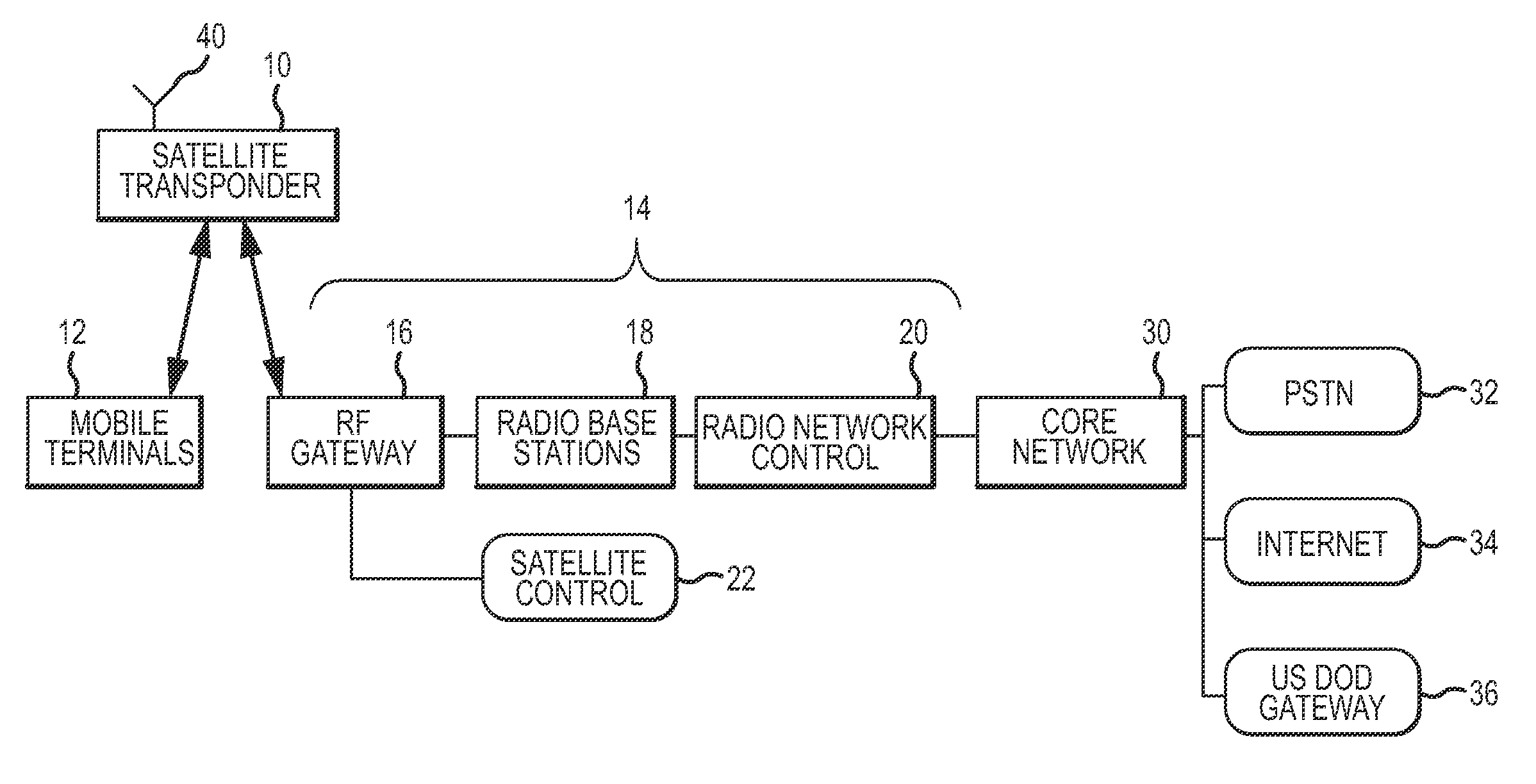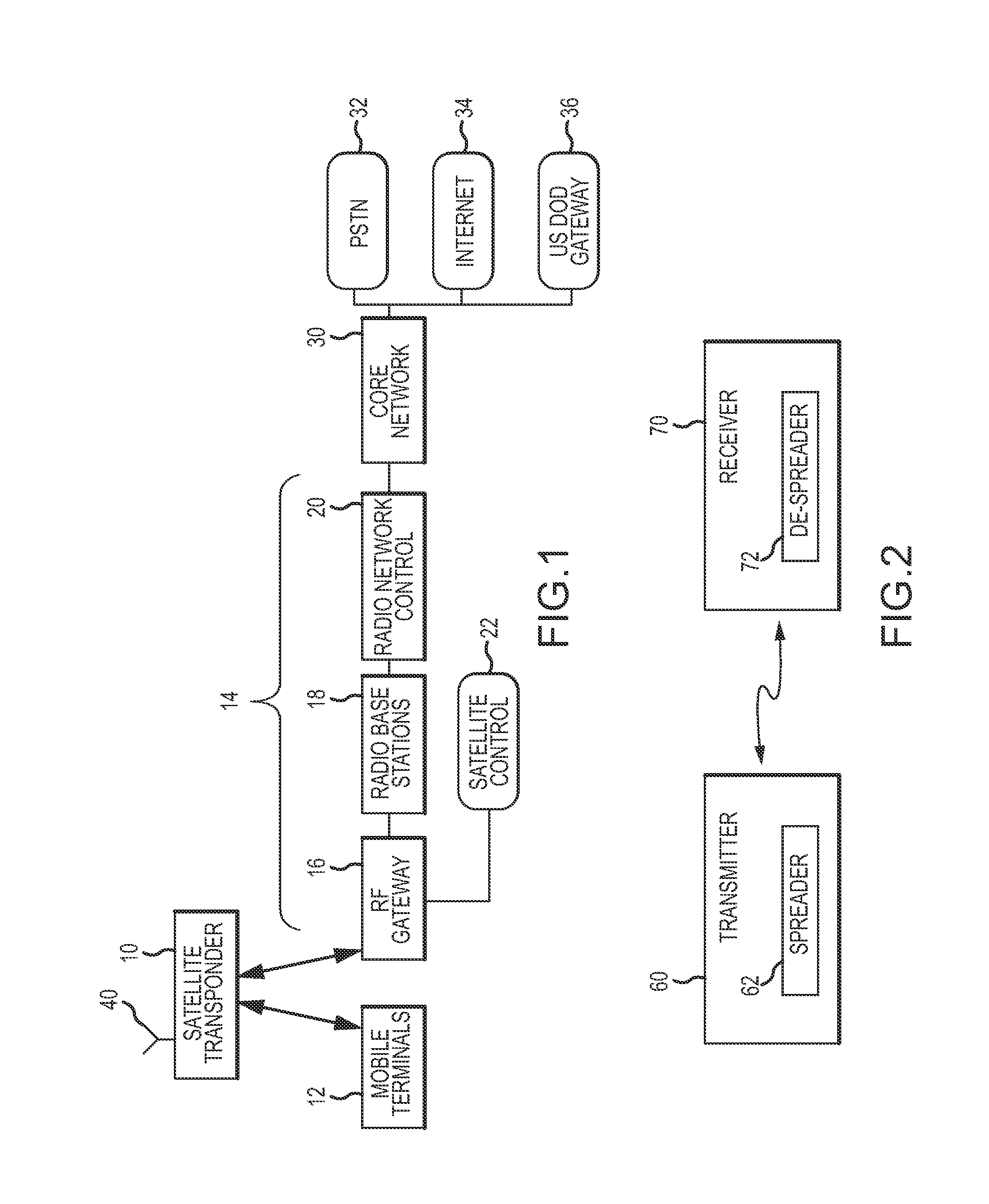Satellite communications system
a satellite communication and satellite technology, applied in the field of satellite communications systems, can solve the problems of limited communication to certain distances between mobile users and ground stations, need to achieve network capacity, and need to accommodate an increasing number of users, so as to achieve less power, increase processing gain, and efficient use
- Summary
- Abstract
- Description
- Claims
- Application Information
AI Technical Summary
Benefits of technology
Problems solved by technology
Method used
Image
Examples
Embodiment Construction
[0015]FIG. 1 shows a satellite 10 which communicates with a plurality of mobile terminals 12. The satellite 10 also communicates with a ground station or base station 14, for instance, via an RF gateway 16 which may be provided with satellite control 22. The ground station 14 further includes radio base stations 18 and radio network controller 20. A core network 30 is coupled with the ground station 14 and provides a terrestrial-based high capacity backbone to facilitate connection with various terrestrial systems such as PSTN 32, the Internet 34, US DoD gateway 36, and the like. Although only one satellite 10 and one ground station are shown, the satellite communications system typically includes a number of satellites 10 and a corresponding number of ground stations. In alternative embodiments, some satellites may have two corresponding ground stations, with feeder link(s) to one or both ground stations. The additional ground station for the satellite provides redundancy. If the s...
PUM
 Login to View More
Login to View More Abstract
Description
Claims
Application Information
 Login to View More
Login to View More - R&D
- Intellectual Property
- Life Sciences
- Materials
- Tech Scout
- Unparalleled Data Quality
- Higher Quality Content
- 60% Fewer Hallucinations
Browse by: Latest US Patents, China's latest patents, Technical Efficacy Thesaurus, Application Domain, Technology Topic, Popular Technical Reports.
© 2025 PatSnap. All rights reserved.Legal|Privacy policy|Modern Slavery Act Transparency Statement|Sitemap|About US| Contact US: help@patsnap.com


